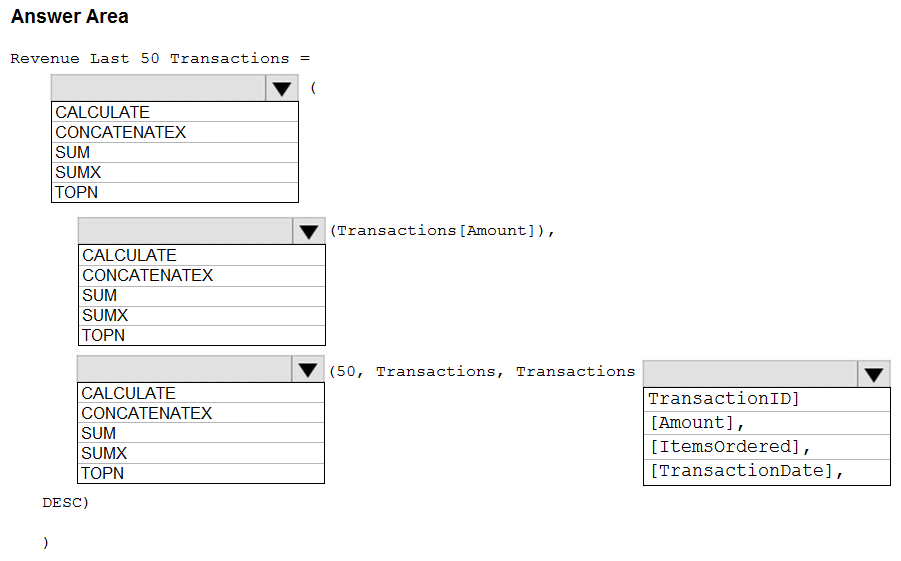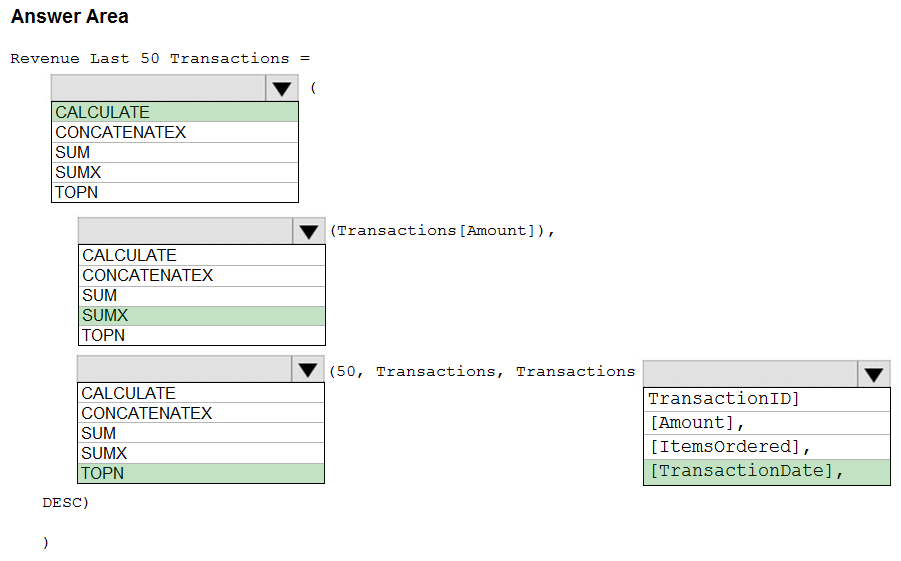

HOTSPOT -
Your company has affiliates who help the company acquire customers.
You build a report for the affiliate managers at the company to assist them in understanding affiliate performance.
The managers request a visual showing the total sales value of the latest 50 transactions for each affiliate. You have a data model that contains the following tables.
The Affiliate table has a one-to-many relationship to the Transactions table based on the AffiliateID column.
You need to develop a measure to support the visual.
How should you complete the DAX expression? To answer, select the appropriate options in the answer area.
NOTE: Each correct selection is worth one point.
Hot Area:

sabribrk
Highly Voted 4 years, 3 months agorouphail
4 years agoRob77
4 years agoDummy92yash
2 years, 9 months agoCanary_2021
3 years, 11 months agohendriktytgatpwc
3 years, 11 months agoExamTopicsU10
3 years, 9 months agobiosedu
4 years, 1 month agoZakriya
4 years, 1 month agoZakriya
4 years, 1 month agoVidSicious
Highly Voted 4 years, 1 month agoZered
2 years, 11 months agoikok
3 years, 6 months agoMatreshka
3 years agoNurgul
3 years, 4 months agomss1
2 years, 10 months agoTomaszthomas
Most Recent 2 years, 7 months agoTeymietee
2 years, 9 months agoTeymietee
2 years, 9 months agorainbowyu
2 years, 9 months agoGecig
2 years, 10 months agoMazarakis
2 years, 11 months agoNhiN
3 years, 2 months agoTechDiva
3 years, 2 months agoXavich
3 years, 1 month agoMabuse1
1 year, 10 months agoLetsgo9999
3 years, 3 months ago123CCM
3 years, 3 months agokwanalytics
3 years, 5 months agoMustPassDA100
3 years, 5 months agosmario
3 years, 5 months ago96sudu
3 years, 4 months agoPatrickStr
3 years, 6 months agoaguilartu1
3 years, 7 months agohanchihl
3 years, 7 months ago